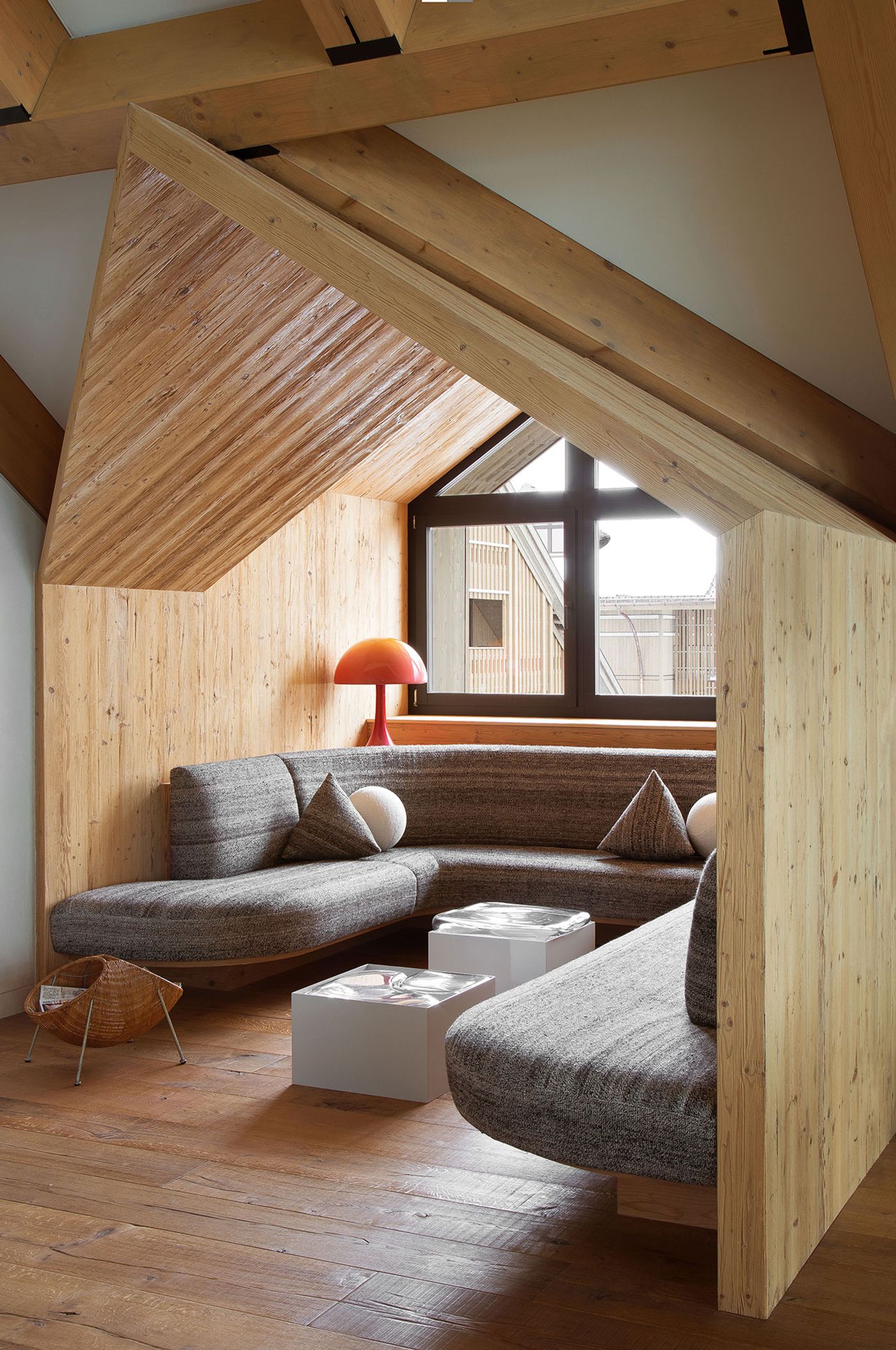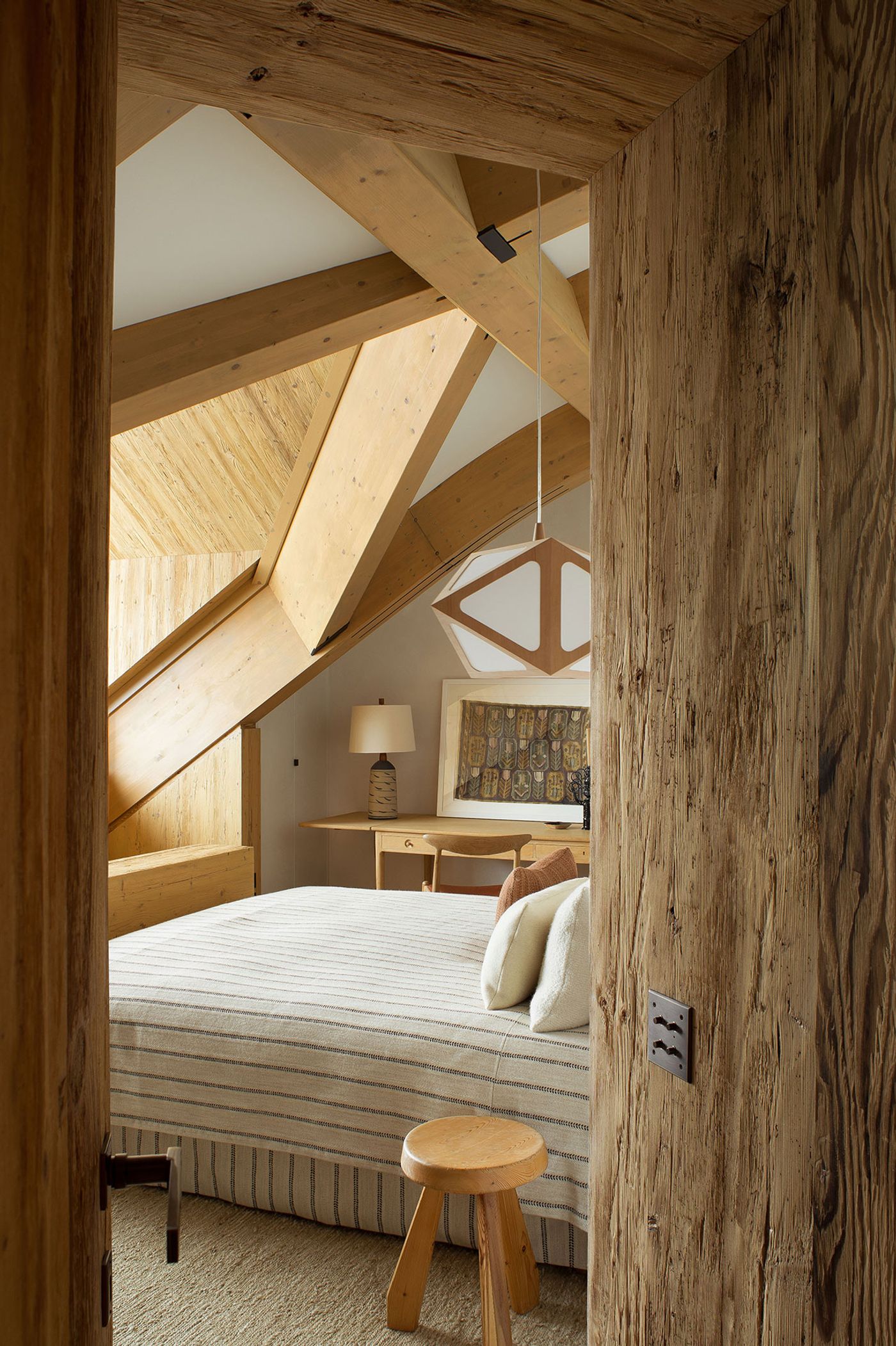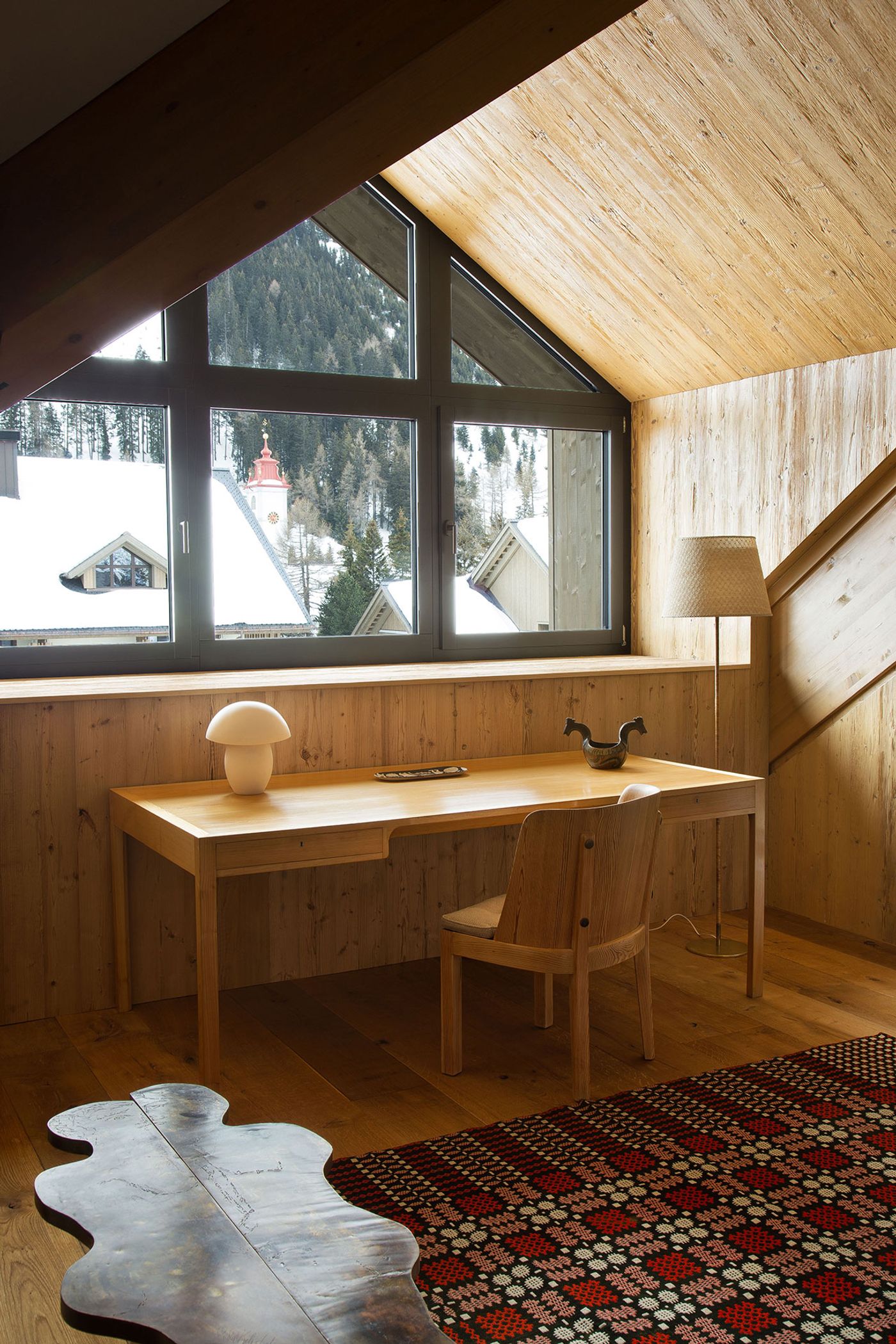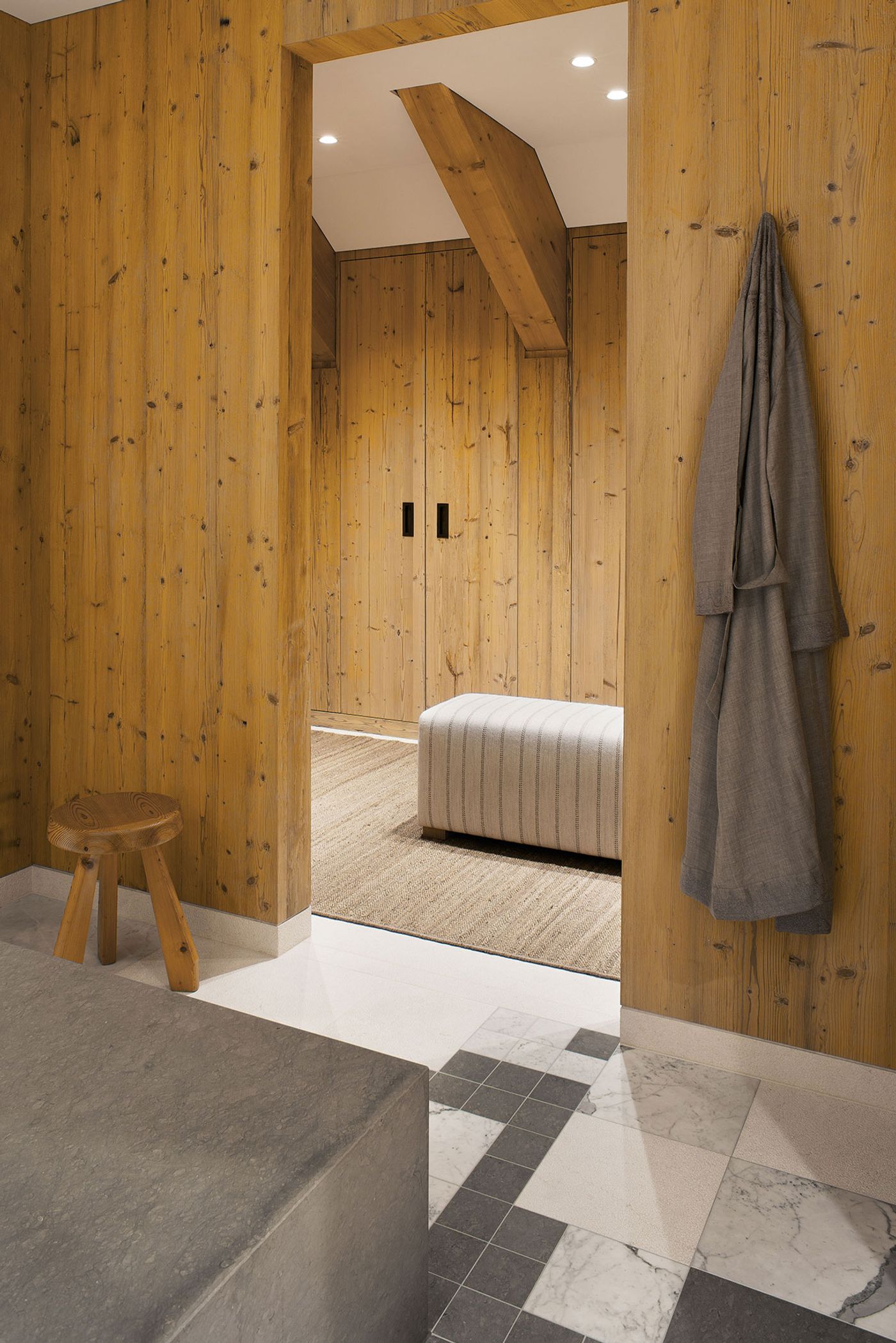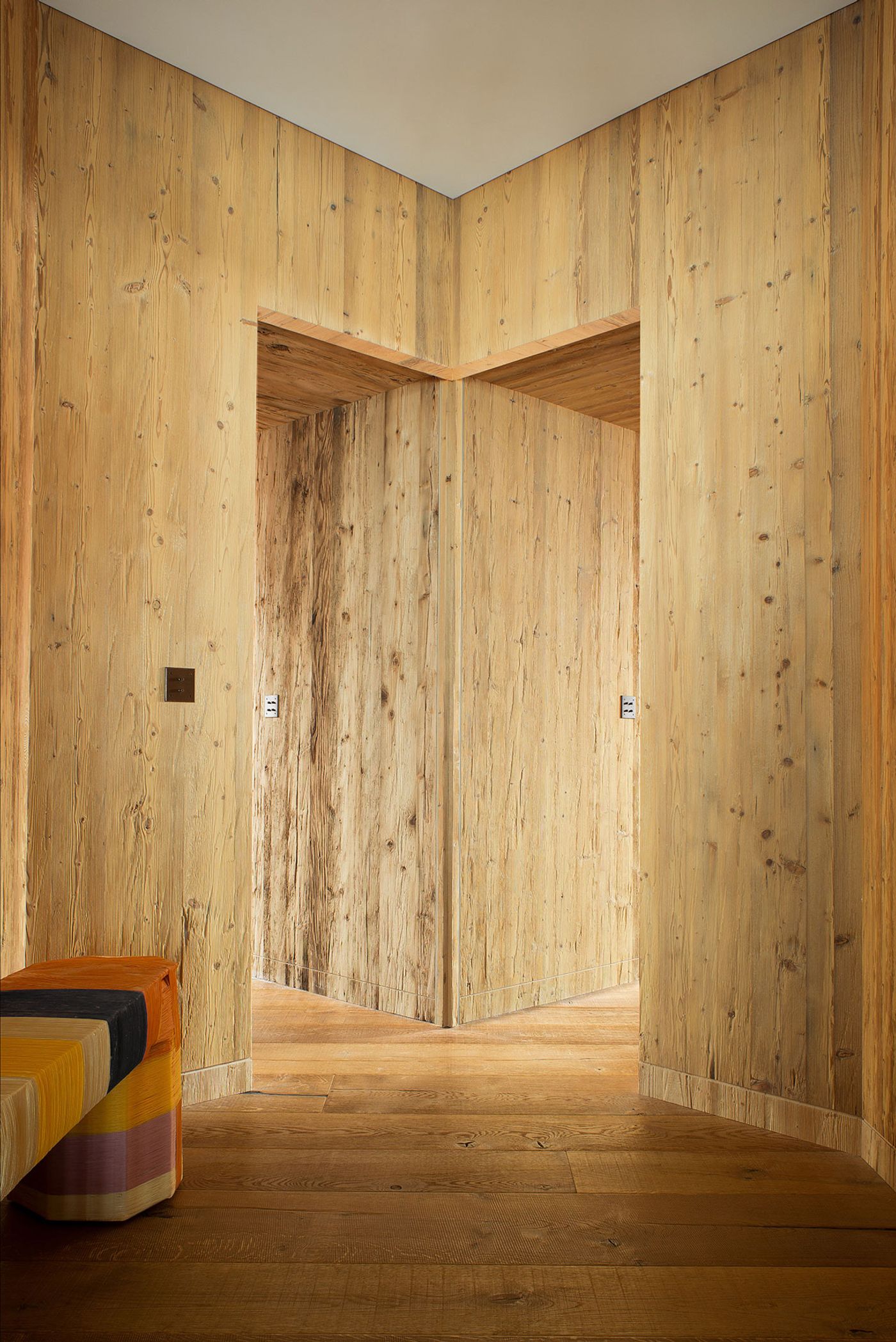
The Avant-Garde meets the Rustic in Pierre Yovanovitch’s Alpine Penthouse
Words by Yatzer
Location
Andermatt, Switzerland
The Avant-Garde meets the Rustic in Pierre Yovanovitch’s Alpine Penthouse
Words by Yatzer
Andermatt, Switzerland
Andermatt, Switzerland
Location
When you think of Swiss chalets, what usually comes to mind is charming wooden houses, quaint ornamentation and solid carpentry. Sure, contemporary incarnations have often added a modern sheen by refining the timber-clad interiors and updating the furniture selection but none have reinterpreted the alpine concept as uniquely and as radically as Paris-based interior designer Pierre Yovanovitch.
Commissioned to design the interiors of a two-storey penthouse in a recently constructed building in the Swiss village of Andermatt, Yovanovitch, who founded his eponymous design atelier in 2001 after a career as a menswear designer for Pierre Cardin, approached the project more as haute couture than architecture, collaborating with contemporary artists and artisans on site-specific installations and custom furniture pieces to establish a refined yet laid-back design aesthetic that harmoniously blends the avant-garde and the rustic.
Occupying 500 square-meters over two levels and blessed with stunning views of the Urseren Valley, the penthouse that was born out of this process is a marvel of unpretentious sophistication and tempered luxury that elegantly frames the beauty of the surrounding landscape instead of upending it.
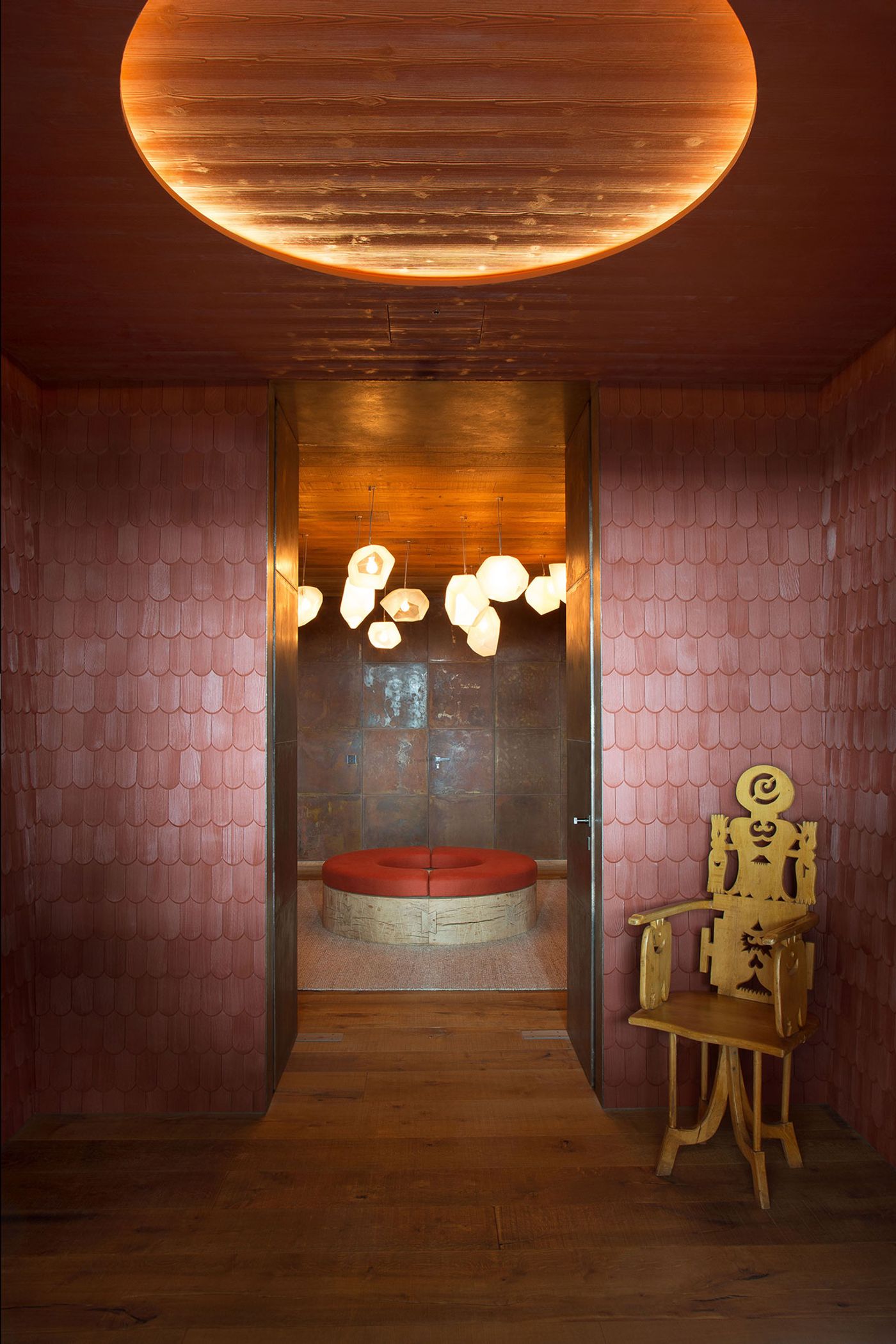
Photo by Jean-François Jaussaud / Luxproductions.
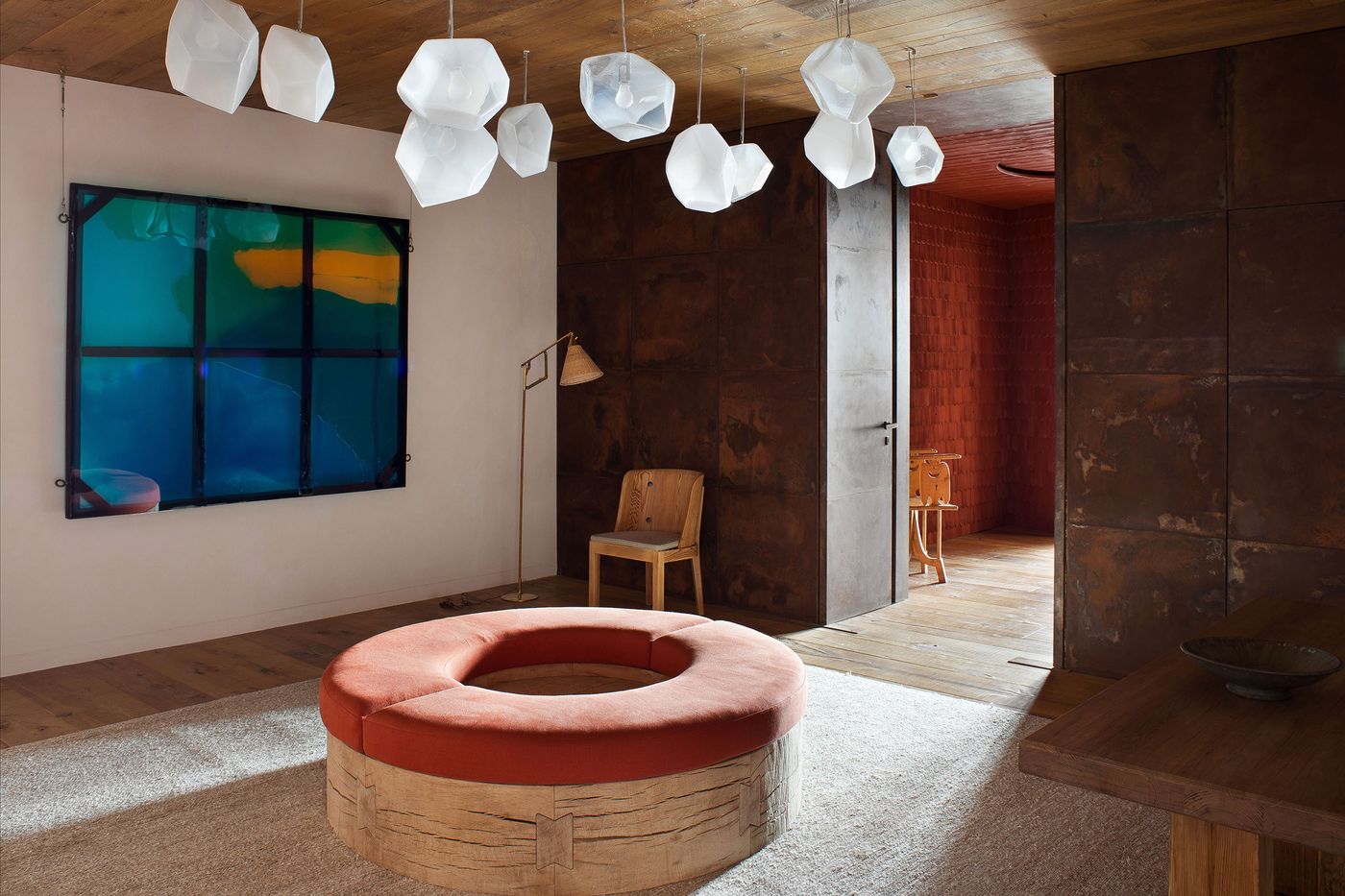
Photo by Jean-François Jaussaud / Luxproductions.

Photo by Jean-François Jaussaud / Luxproductions.
On the lower floor, the public areas are centered on a grand, eight-meter high space featuring oversized bay windows and a dramatic swooping roof, its splendor made all the more potent as one enters through the much smaller and quite darker entrance hallway and antechamber. The roof’s unconventional curvaceous shape is complemented by the semi-cylindrical form that wraps around the cantilevered staircase leading up to the private quarters that accommodate a master suite, a bedroom for the children and two guest rooms.
As is customary, solid wood is the predominant material throughout the interiors—oak for the floors and larch for the cabinetwork and woodwork—yet the penthouse never feels like a glamorized log cabin due to the sculptural sensibility that characterizes many of the wooden constructions, exemplified by the supple, rib-like roof beams and concave staircase niche, and the complementary use of natural materials such as stone, marble, steel and ceramic, the latter cladding one of the fireplaces, as well wool, linen and hemp.
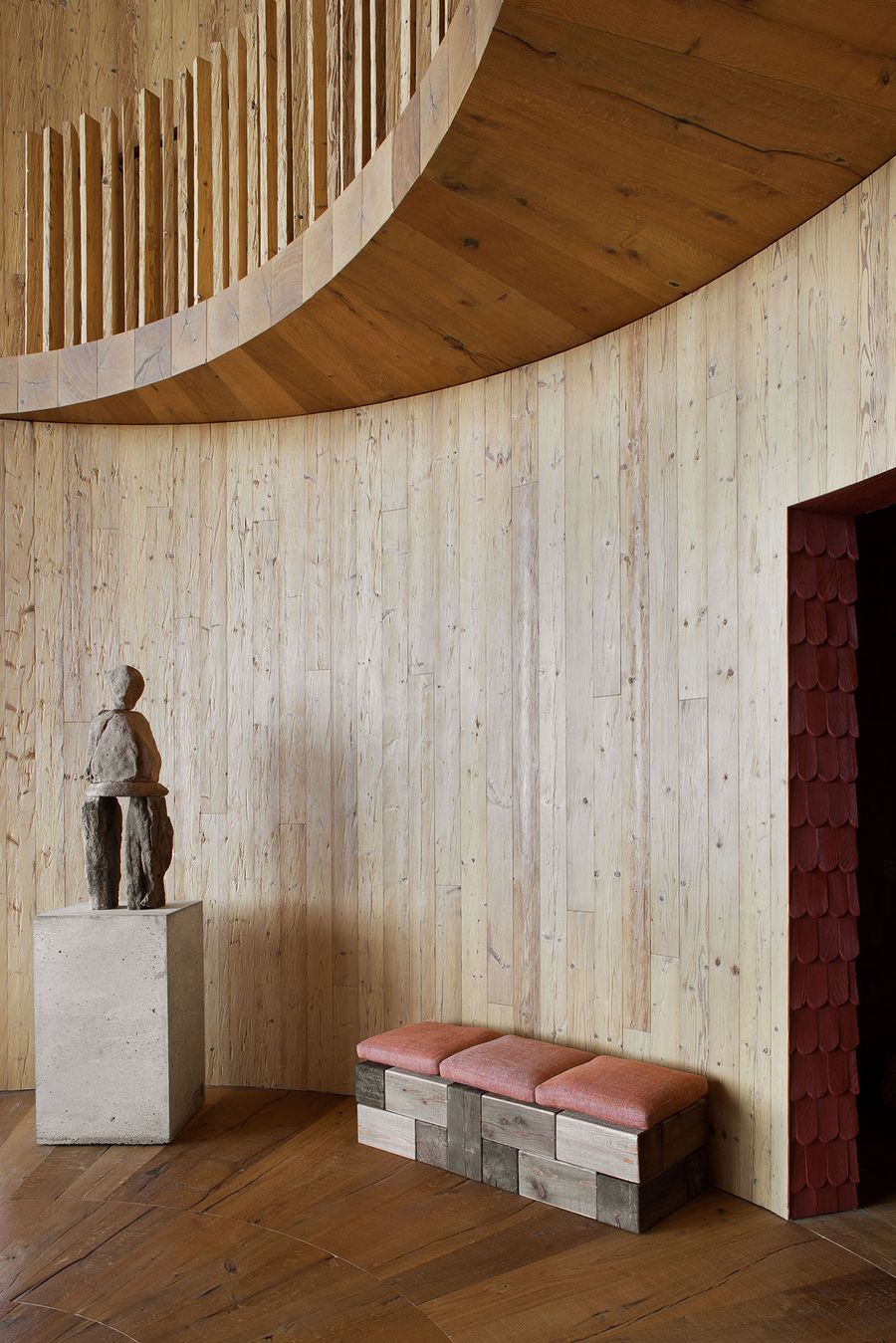
Photo by Jean-François Jaussaud / Luxproductions.
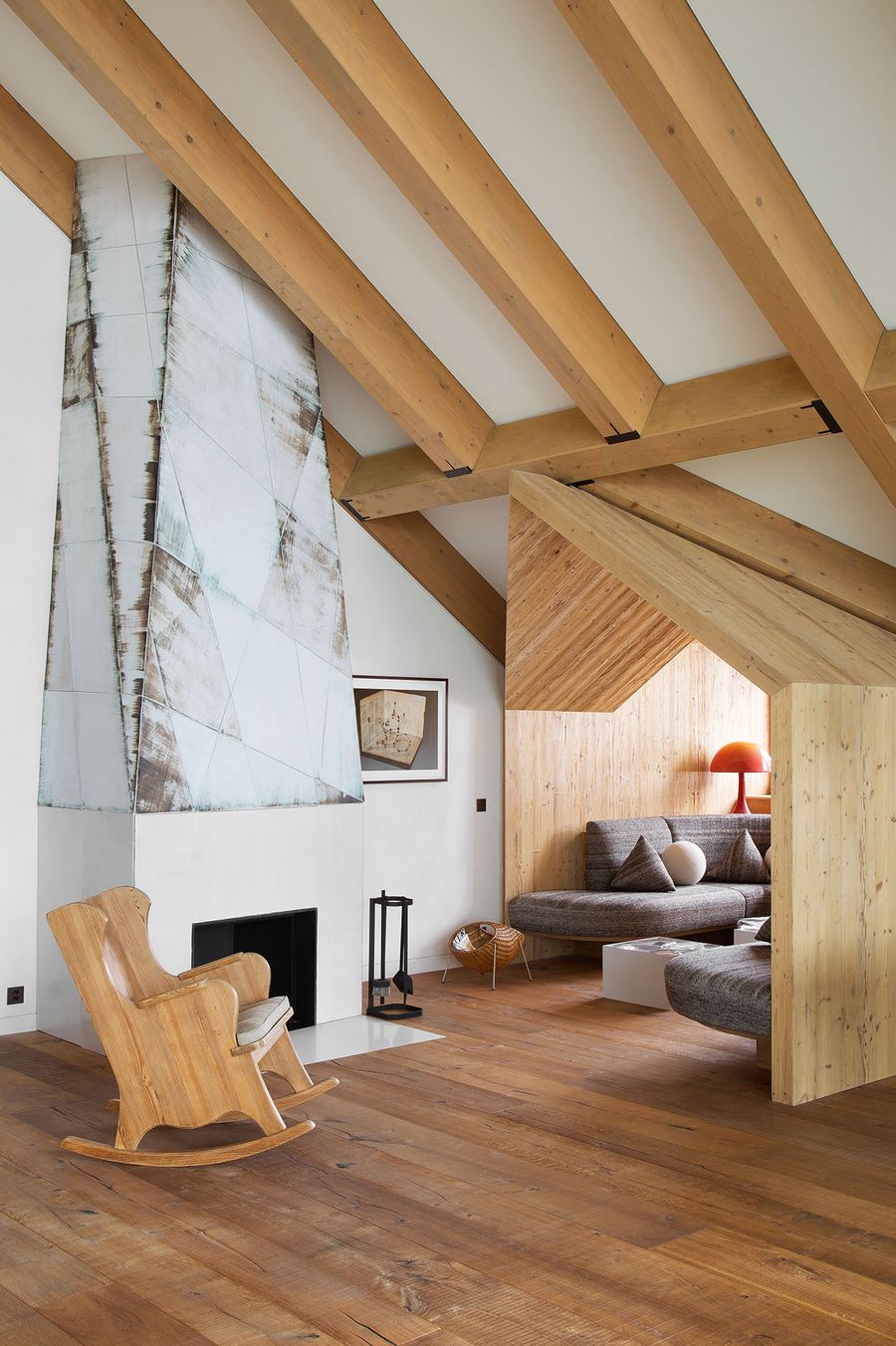
Photo by Jean-François Jaussaud / Luxproductions.
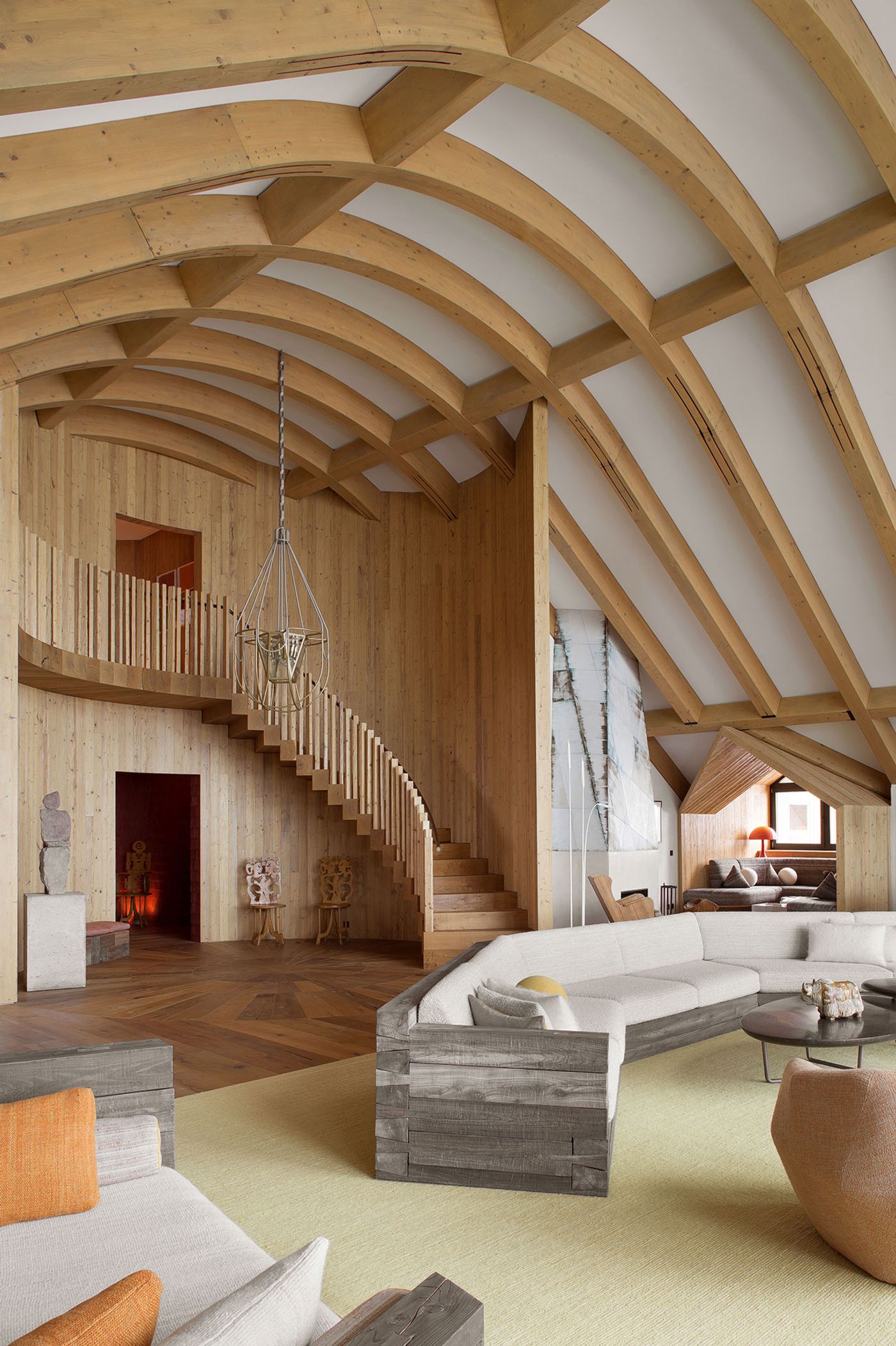
Photo by Jean-François Jaussaud / Luxproductions.
Likewise, although the design appropriates several elements of local alpine architecture, it ingeniously integrates them into the aesthetic so as to eschew looking conspicuous or kitsch. Thus, the ubiquitous wooden picket fence has been re-imagined as a sculptural balustrade, the village’s typical red roof tiles have been transformed into an eccentric wall treatment in the vestibule and the chalet’s iconic A-frame shape has been reborn as playful wooden alcoves.
Solid wood is also featured in many of the bespoke furniture designed by Yovanovitch, such as the angular sofa of grey-tinted larch wood and matching daybed in the living room, and the two semi-circular benches of solid oak in the entrance hall, both manufactured by French carpenters Pierre Elois Bris. The tailor made furnishings, which also include dining and coffee tables, armchairs, standing lights, fire places, rugs and cushions, are complemented by an eclectic selection of high-end, 20th century Scandinavian, European and American antiques such as Swedish designer Axel Einar Hjorth’s pine wood pieces from his 1930s Sportstugemöbler line, Chilean artist Roberto Matta surrealist totem chairs from the 1970’s, also in pine wood, and American designer John Dickinson’s three-legged “African table” sculpted in cast composite.
The predominant use of natural materials is complemented by an eclectic selection of light fittings that are inspired by nature such as American designer Jeff Zimmerman’s hand-blown suspension lights in the entrance inspired by salt crystals, and “Fragile Future”, an ethereal chandelier above the dining table, inspired by the fragility of the dandelion. Designed by Lonneke Gordjin & Ralph Nauta of Amsterdam-based Studio Drift and part of a modular series of lighting sculptures that merge nature and technology, the mesmerizing chandelier features a three-dimensional, tendril-like, bronze circuit structure and a plethora of LED light points, each one adorned in real dandelion seeds that are glued by hand, perfectly epitomizing the high level of artistry, ingenuity and craftsmanship that this stunning penthouse-cum-work of art has been designed with.
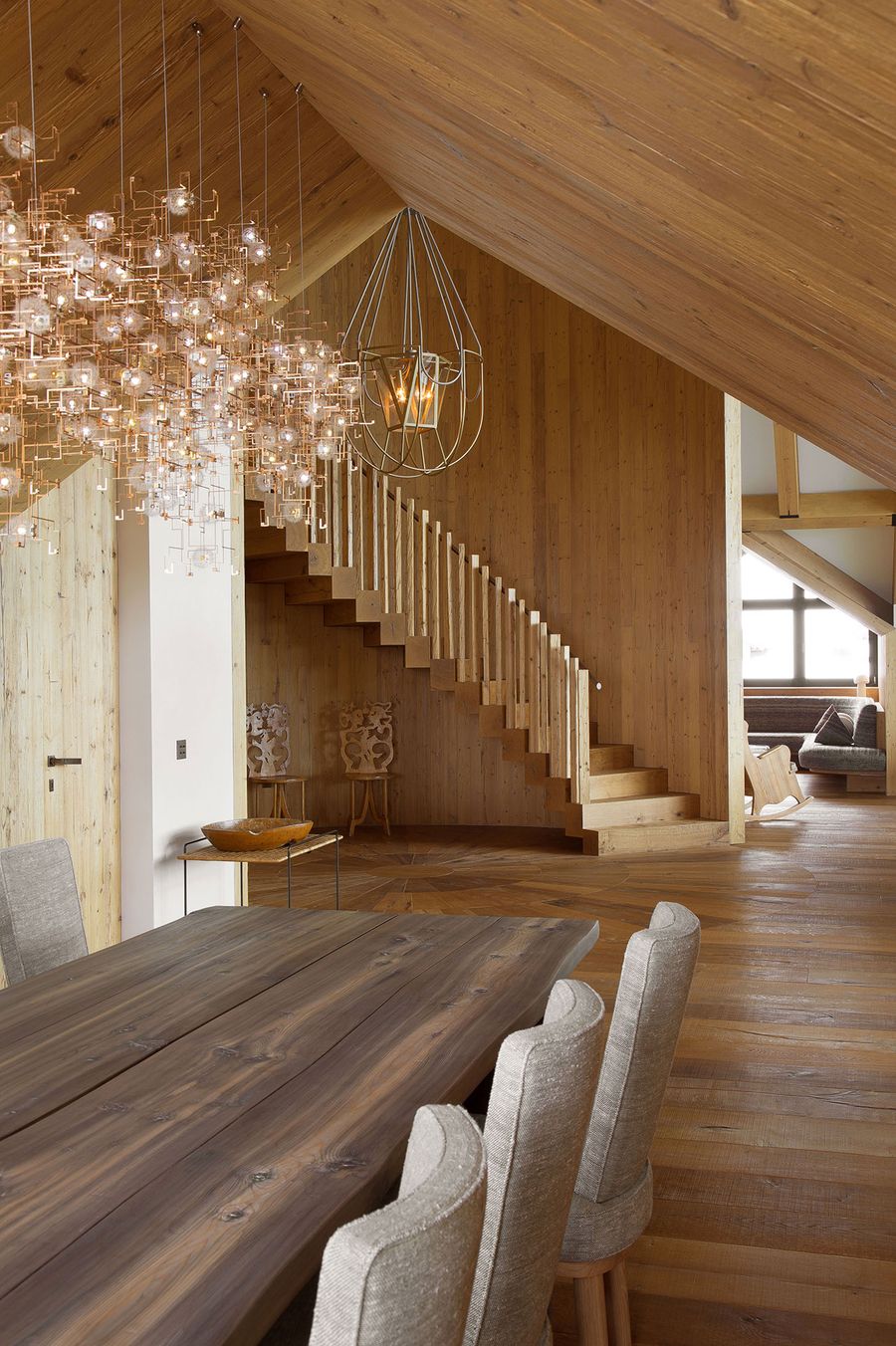
Photo by Jean-François Jaussaud / Luxproductions.
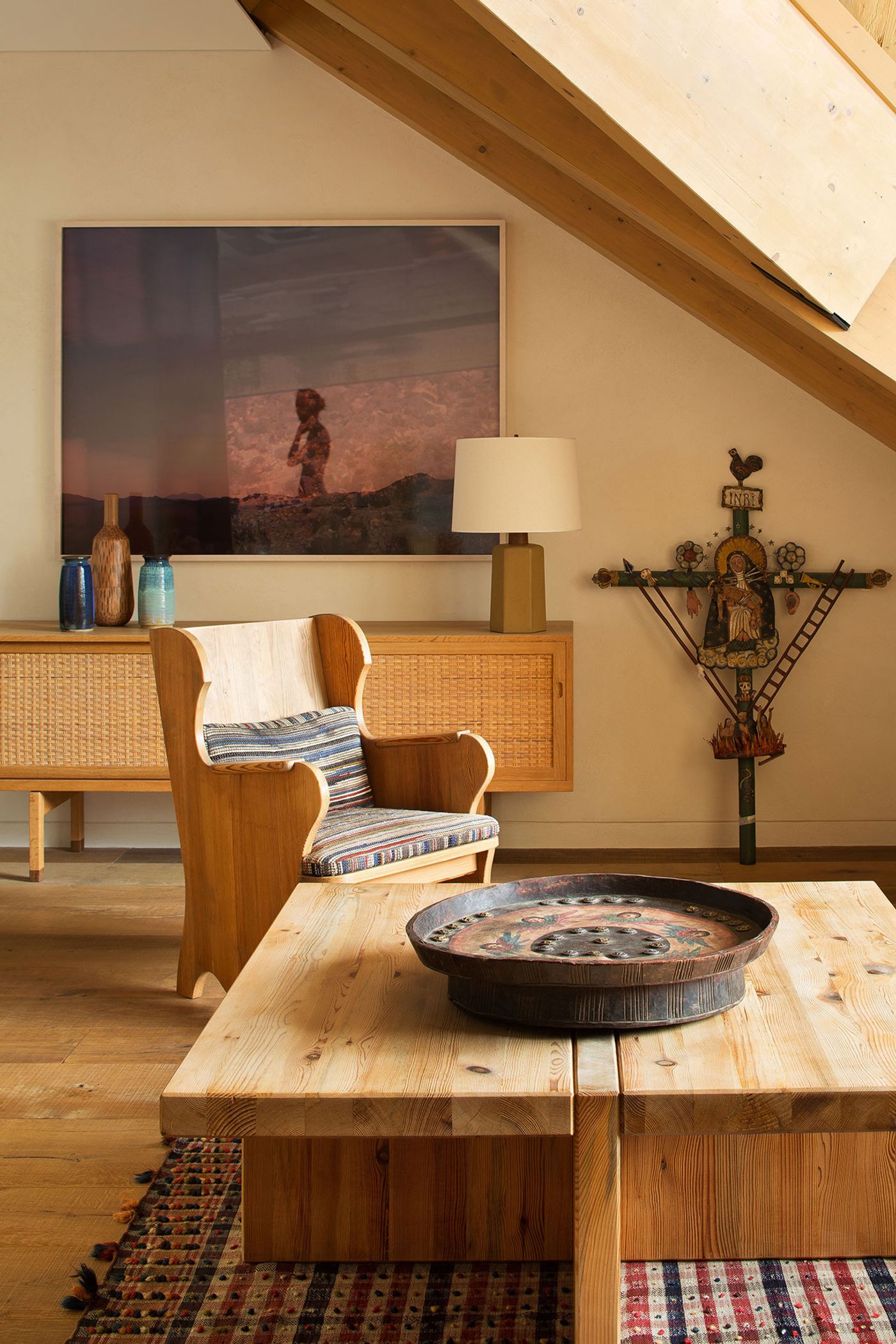
Photo by Jean-François Jaussaud / Luxproductions.

Photo by Jean-François Jaussaud / Luxproductions.
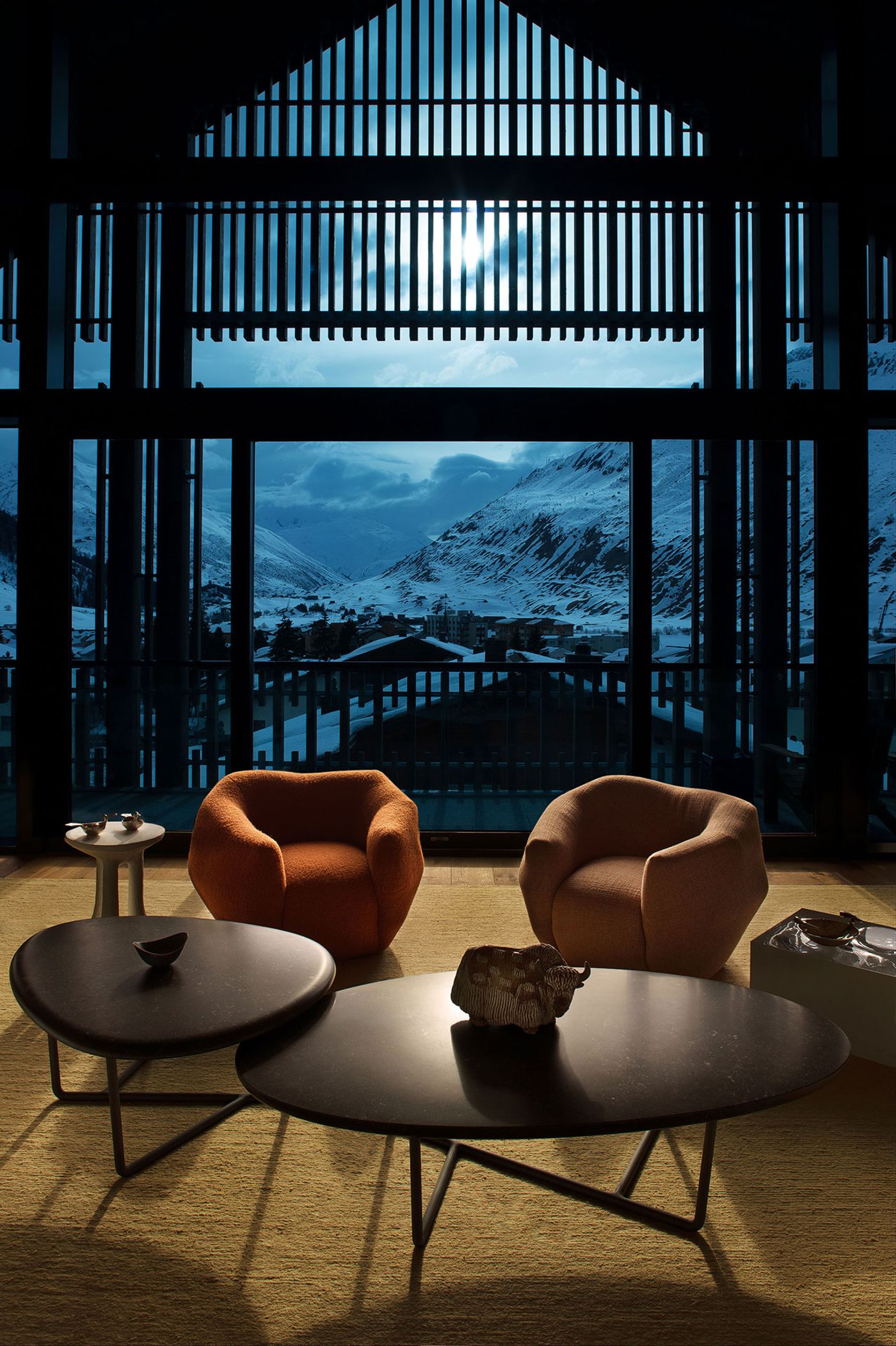
Photo by Jean-François Jaussaud / Luxproductions.
